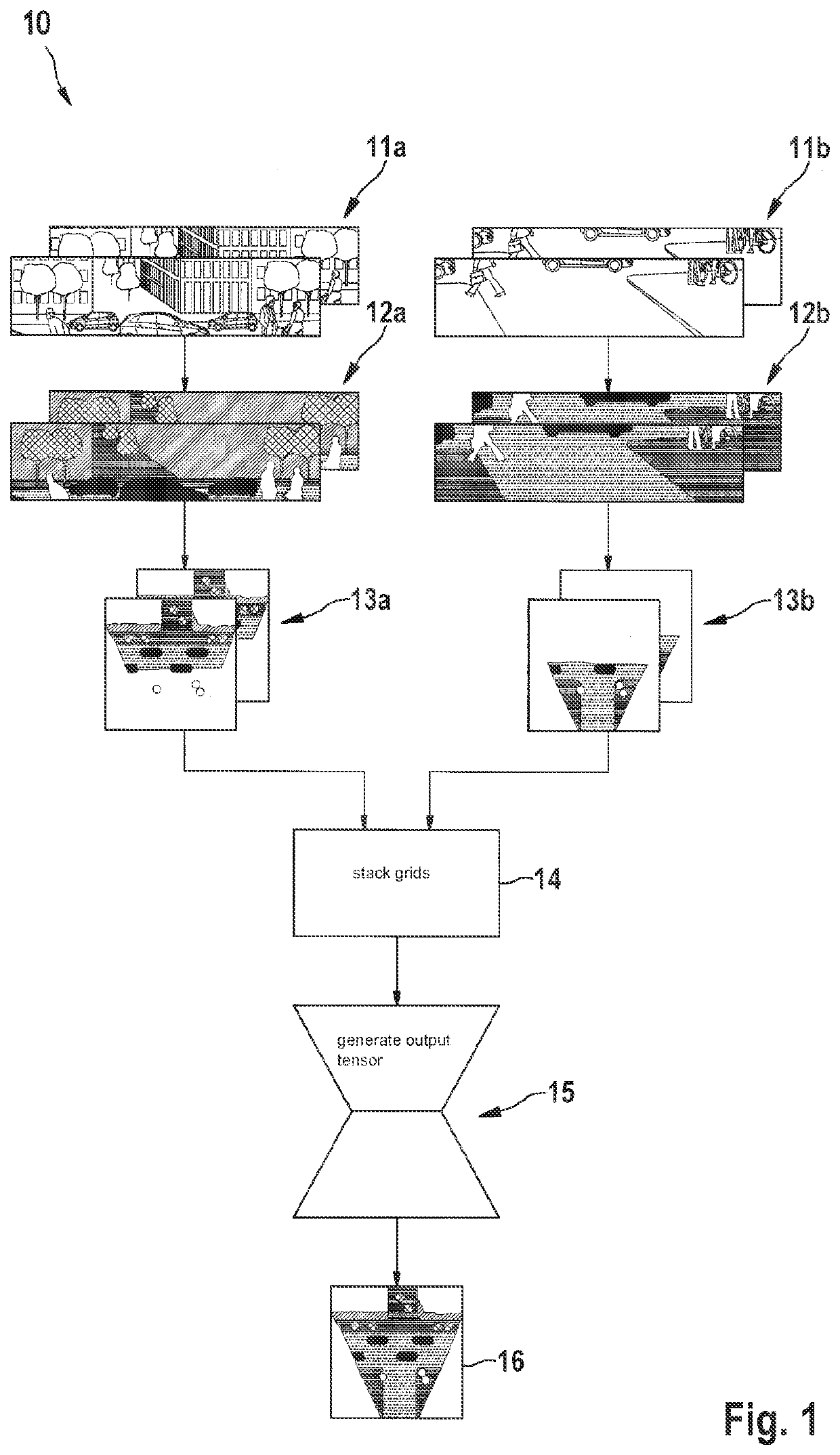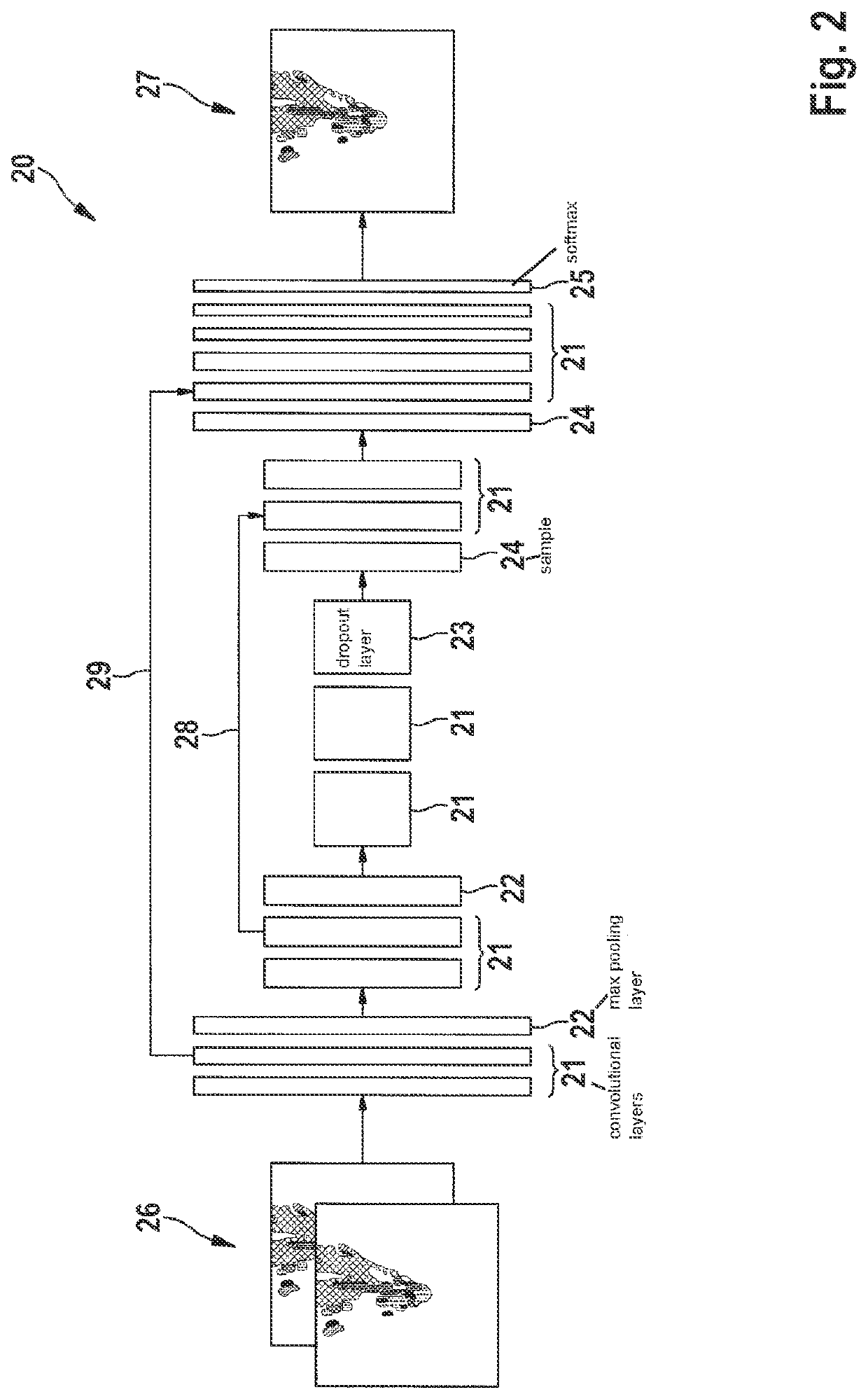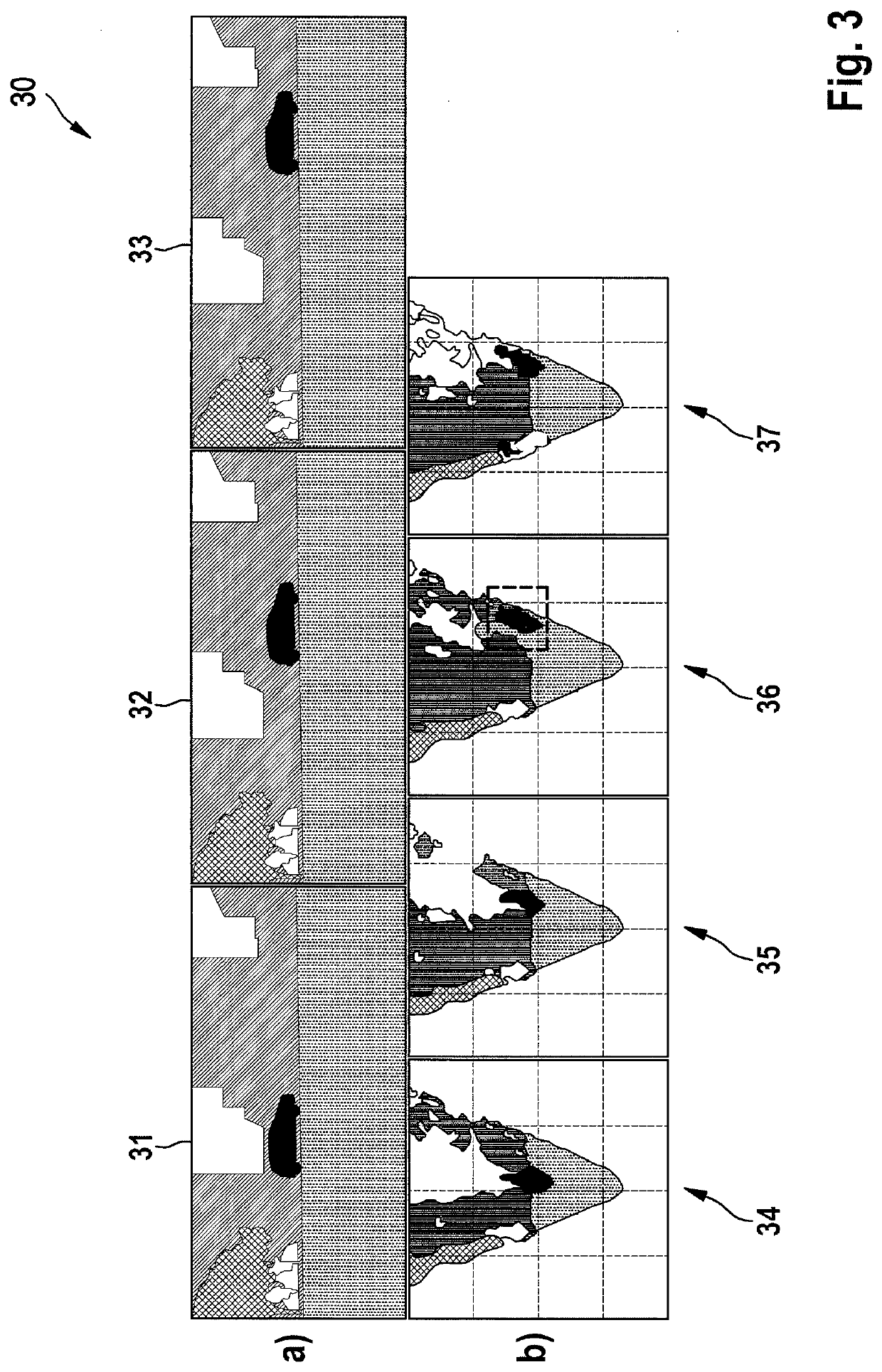Method for representing an environment of a mobile platform
a mobile platform and environment technology, applied in the direction of vehicle position/course/altitude control, using reradiation, instruments, etc., can solve the problems of computation-time and memory footprint etc., to achieve constant computational and memory complexity
- Summary
- Abstract
- Description
- Claims
- Application Information
AI Technical Summary
Benefits of technology
Problems solved by technology
Method used
Image
Examples
Embodiment Construction
[0081]A schematic overview on an embodiment of the method for representing an environment of a first mobile platform is shown in FIG. 1. The features of the environment are captured by discrete time sequences of sensor data of two sensors, which are represented here as image sequences 11a, 11b of two digital cameras from past times. The respective time markers of the images are recorded when they were taken and are captured together with the images. The at least two sequences of images may be taken at a different rate and at different times.
[0082]The two digital cameras characterize with their sequences of digital images the environment of a mobile platform and may be mounted at the platform or outside of the platform or one at the platform and the other sensor at a defined site outside of the platform. Alternatively at least one sensor is mounted at another mobile platform. The part of the environment, which is characterizes by the sensors, may be different. That means that, e.g., ...
PUM
 Login to View More
Login to View More Abstract
Description
Claims
Application Information
 Login to View More
Login to View More - R&D
- Intellectual Property
- Life Sciences
- Materials
- Tech Scout
- Unparalleled Data Quality
- Higher Quality Content
- 60% Fewer Hallucinations
Browse by: Latest US Patents, China's latest patents, Technical Efficacy Thesaurus, Application Domain, Technology Topic, Popular Technical Reports.
© 2025 PatSnap. All rights reserved.Legal|Privacy policy|Modern Slavery Act Transparency Statement|Sitemap|About US| Contact US: help@patsnap.com



